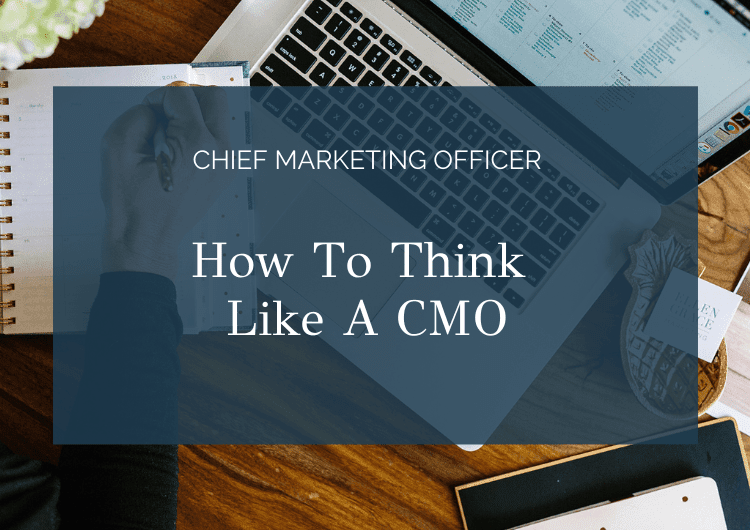
As a business owner, I know you wear a lot of hats.
I know you are constantly pivoting and experiencing growing pains.
I know you tend to sacrifice your own business for the needs of your clients or customers.
I know this because I am in your shoes too.
In order to be successful, I’ve found it’s important to not “wing” it, especially when it comes to your marketing plan – which is your direct line of communication to new and future customers.
You need to wear that CMO (Chief Marketing Officer) hat every once in a while. This involves being proactive and doing a little planning up front while moving away from randomness & inconsistency.
Sound overwhelming? Here’s 5 things to consider when building a CMO marketing plan:
1. Have A Vision
Every 6 months, take some time to think big picture. How much do you want to make in the next 6 months? How is this different from what you did the last 6 months? In order to meet this lofty goal, what needs to change? Is there seasonality in your business (i.e. weather or holiday sales) that may affect your results?
Look at your success thus far with specific products or services and know which ones are bringing you top line sales, and those that bring you the most profitability too. Also look at customer segments performing well and think about ways to attract more customers like them. Do you just need more of the same type of customers, or are you looking to shift your target audience? If it’s a shift, do you need to change your messaging, or go somewhere else to find them?
2. Be Realistic
Whether it’s a blog a week or once a month, don’t bite off more than you can chew so you don’t lose your motivation and get discouraged.
You need to evaluate the internal resources you have (time, money, people), but also consider what you might need to ask for help on so things get done quicker or even better. Also, if (for example), you average $300 in sales per email, don’t assume that you are now going to double it, just because, without doing something different.
3. Map It Out
How often do you need to be in front of your ideal customers and how will you do this? In other words, what platforms or channels will you use to communication your messaging? Are there overarching themes that you can use as an anchor to your messaging that will resonate with your customer?
Going back to your visions and sales goal can help you develop a detailed roadmap to figure out specifics on how many blogs, emails, posts, etc. need to be created based on the ROI each produce.
This is where you create a calendar (I like to use excel as a starting template) that outlines everything – timing, platforms and all their nuances. For example, with Instagram what will your grid look like and how will it rotate through your key content categories? Will you need photos for your feed and your stories or do you have them saved and organized? Do you need to create any branded images? Will you go live or do need to record something for stories? What about IGTV and hashtags?
The more you can map out now, the closer you get to the finish line – AND – the easier it is for someone on your team to execute.
4. Set Up & Execute
Now it’s time to give you and your team to-dos to execute the plan. If you are planning on posting a blog on August 1st, you will want to create tasks leading up to this. Such as a rough draft, final draft, create/gather images for web and social, social copy, and email contents, that all support this post.
Consider project management tools like Basecamp to help you manage tasks list and to-do. You can also look at scheduling tools to help batch out things like blog posts, emails and social posts.
5. Measure & Repeat
Did your efforts drive the results you wanted? You want to know the specifics from website traffic and what drove products purchased? How did your emails perform, and which social posts drove the most engagement? You want to understand what worked so you can do it again, and ditch what didn’t.
Here’s how you can pull some of these numbers from your Google Analytics.
Having a dashboard in place that you can update each month to see where you are winning and losing will help you stay organized and on top of your business.
Timing Tip:
From a timing perspective, here’s an example of how I break it down each of these by month. In other words, I do the Vision work every 6 months. Typically in June for Jul-Dec.
Then Map-it Out happens quarterly. So for Q4, I would map it out in Sept so it’s ready in time.
For Set Up, Execution & Measuring the results, this happens each month. So for September tasks: the Set up will happen the month prior (August), The Execution happens in the current month (September) and Measuring the month after (October).
Want some help? Consider a Virtual CMO Service Package.


